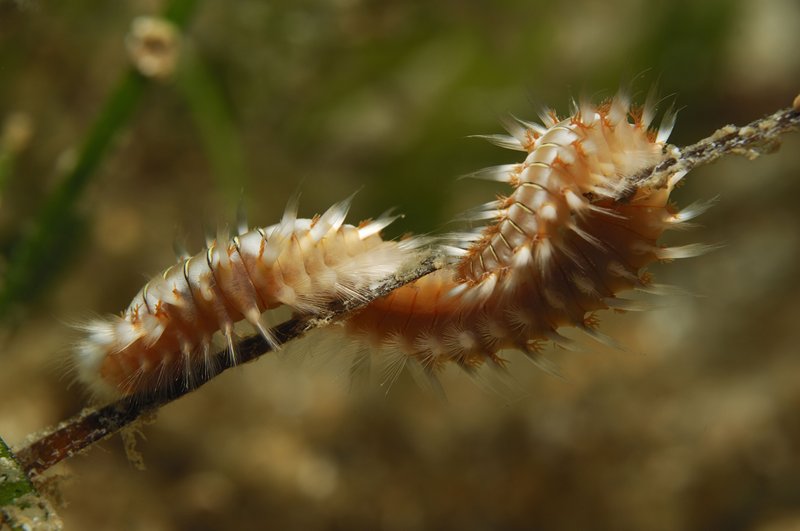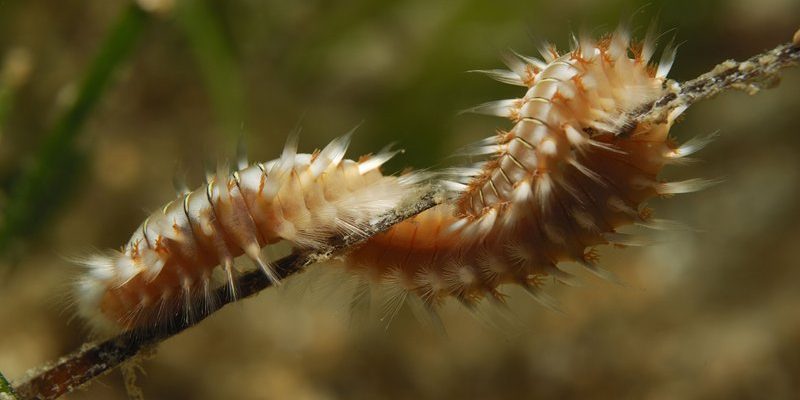
Bristle worms, or polychaetes, are more than just colorful decorations in the underwater world; they play crucial roles in the marine ecosystem. You see, their red tufts don’t just add a splash of color; they serve important functions that can give you insight into the worm’s health, environment, and even its behavior. So, let’s dive deeper into the significance of these red tufts and what they might indicate about these intriguing creatures.
Understanding Bristle Worms
Bristle worms belong to the polychaete family, which consists of a wide range of segmented worms found in oceans around the globe. They usually have long, slender bodies with bristles made of chitin protruding from their segments. Think of them as the “hairy” relatives of earthworms, but with a whole lot more flair! These little guys thrive in various environments, from sandy seabeds to rocky shorelines.
What’s really interesting is that not all bristle worms look alike. They come in countless colors and sizes, adapting to their surroundings like natural chameleons. However, those red tufts you see are a common feature in some species. They can be found in both shallow coastal waters and deeper oceanic regions, showcasing a remarkable ability to adapt.
So, why should you care about these worms? Well, they play an essential role in the ecosystem. They contribute to nutrient cycling by breaking down organic materials and aerating the substrate, which helps maintain healthy ocean habitats. Plus, they serve as food for various marine animals, making them important players in the food chain.
The Significance of Red Tufts
The striking red tufts on bristle worms can signify several things, the most notable being the presence of **gills**. These tufts are often extensions of the worm’s respiratory system, allowing for efficient gas exchange. Just like how our lungs help us breathe, these gills help the worms absorb oxygen from the water, enabling them to thrive in their aquatic environments.
The color red is not just for show; it can also indicate the species of the bristle worm. Many species exhibit vibrant colors due to specific pigments that aid in their survival. This can help with camouflage, making it harder for predators to spot them. Here’s the thing: a bristle worm’s ability to adapt its color can be a sign of its health and environment, reflecting who it is as an organism.
Additionally, the red tufts can serve other purposes. Some researchers believe these tufts may act as sensory organs, helping the worms detect changes in their environment. They might be able to sense water currents, temperature changes, or even chemicals in the water, which helps them navigate their surroundings more effectively.
Red Tufts and Environmental Health
You might be wondering how the red tufts can provide insights into the health of their environment. Bristle worms, including those with notable red tufts, can act as bioindicators. This means their presence, abundance, and overall health can give clues about the quality of their habitat. If you notice an increase in these worms in certain areas, it could indicate a healthy and balanced ecosystem.
Conversely, if the population of bristle worms declines or their tufts lose color, this might signal problems. Pollution, habitat destruction, and changes in water quality can negatively impact these creatures and, by extension, the entire marine ecosystem. Monitoring the health of bristle worms can thus be an essential component of conservation efforts.
For example, scientists often conduct surveys of bristle worm populations in areas affected by pollution to assess the impact on the ecosystem. If red tufts begin to disappear or show signs of stress, it might prompt further investigation into the water quality and overall health of that marine environment.
Common Misconceptions About Bristle Worms
When it comes to bristle worms, there are a few common misconceptions that can lead to misunderstanding their role and significance. One of the biggest myths is that all bristle worms are harmful. While it’s true that some species can sting or irritate when touched, most are harmless and even beneficial to the ecosystem.
Another misconception is that red tufts mean the worm is unhealthy or dying. In reality, the color of these tufts varies for many reasons, including species, diet, and environmental conditions. So, before jumping to conclusions about a bristle worm based solely on its appearance, it’s essential to consider the context in which it thrives.
Lastly, some aquarium hobbyists might think that bristle worms are pests to be eliminated. However, they can be incredibly helpful in maintaining a balanced tank environment. Their activity helps aerate the substrate and break down waste, similar to how bacteria work to keep things clean. Instead of viewing them as nuisances, you might want to think of them as gardeners in your aquarium.
How to Observe Red Tufts on Bristle Worms
If you’re keen on observing these fascinating creatures, you might want to know where to find them. Bristle worms are often found in marine environments, especially in sandy or muddy substrates. If you’re exploring tide pools or snorkeling, look closely at the seabed—these worms can be hiding among rocks or buried in the sand.
When you spot a bristle worm, take a moment to appreciate its vibrant red tufts. Use a magnifying glass or a camera with a good zoom to capture the details without disturbing the creature. It’s essential to observe from a safe distance, as getting too close may scare the worm away or cause damage to its environment.
If you’re diving into an aquarium hobby, consider adding a few bristle worms to your setup. Just remember, they thrive in environments with plenty of detritus, so a well-maintained tank with live rock and sand is ideal. Watching them interact with their environment can be a rewarding experience, and you’ll appreciate the role they play in keeping things clean and balanced.
Protecting Bristle Worms and Their Habitats
The health of bristle worms and their striking red tufts can tell us a lot about the state of our oceans. As they face threats like habitat destruction and pollution, it becomes increasingly important to advocate for their protection. Supporting marine conservation efforts and being mindful of your actions can make a difference.
For instance, if you’re visiting coastal areas, be conscious of your environmental impact. Avoid stepping on sensitive marine areas, and don’t collect marine life, including bristle worms. Educate others about the importance of these creatures and the ecosystems they inhabit. You’d be surprised how a little bit of knowledge can go a long way!
Additionally, advocating for clean waterways and supporting organizations dedicated to ocean conservation can help ensure that bristle worms and their natural habitats thrive for generations to come. Every small effort counts, whether it’s participating in beach clean-ups or spreading awareness about responsible fishing practices.
In conclusion, the red tufts on bristle worms might seem like just a colorful feature, but they signify much more than that. From indicating respiratory function to reflecting environmental health, these worms are vital players in their ecosystems. By understanding and respecting the roles they play, we can better appreciate the intricate tapestry of life beneath the waves.

